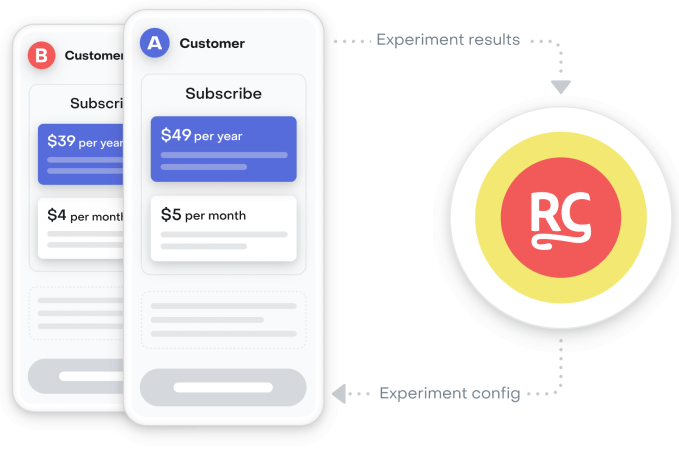Just a day after Apple announced a revamp of its App Store pricing policy to introduce 700 new price points, subscription platform RevenueCat is rolling out a new feature that will allow developers to A/B test different price points for their app subscriptions. The feature, called “Experiments,” aims to help developers determine the best price points to convert free or trial users to paying customers, retain the customers they have, test prices for different service tiers, and more.
The feature arrives at a time when subscriptions have saturated the app economy, but inflation is leading consumers to re-evaluate what paid services are actually worth keeping. This could have ramifications on the broader app ecosystem, as developers of apps not deemed “must haves,” could see an increase in cancellations as users continue tightening their belts.
Being able to figure out what price points work best is valuable to subscription app developers trying to operate in this economy — but it’s also something that requires solid data and analysis to make sure it’s being done right. For example, simply rolling out a steep price cut could help boost conversions, but may not make for a sustainable business in the long term. Developers need to see which prices can deliver the highest lifetime value (LTV) for per customer — that is, the revenue they generate from their subscription over a longer period of time.
RevenueCat says the new feature works remotely, meaning developers don’t have to submit an app update to the App Store to test their latest hypothesis around pricing. Using tables and other data visualizations, Experiments will also showcase how price changes would impact the full subscription funnel, including trial, paid and churned users. This analysis includes a variety of key metrics around conversions, trials, churn, LTV revenue, MRR and more.

Image Credits: RevenueCat
The company notes that while price tests are important, there are plenty of other factors that come into play when determining how to charge for a product. It suggests developers also test things like subscription durations, the mix of durations made available, bundling, trial durations, introductory offer prices, offers designed to win back churned users, localized pricing and more.
Pricing experimentation is not new to the app industry — and it can sometimes be controversial. Consumers were outraged, for example, to find out Tinder was sneakily charging its older users more for the same services. (The company later vowed to end the practice after a court ruled Tinder was violating age discrimination laws.) In other words, it’s important to keep the ethics and legality around price setting in mind when proceeding with price change experiments.
While there are other tools for A/B testing available, in the mobile subscription management space, YC-backed RevenueCat is considered a market leader, having raised $56.5 million in funding, following last year’s $40 million Series B. The launch will help the service remain more competitive as it grows. And, with Apple’s announcement yesterday, it may also be able to attract more customers excited by the possibility of more price points to choose from.
Alongside the launch, RevenueCat’s year-end report also provided some insights on what prices are currently most popular. Using data from more than 12K apps, the company found that $9.99 is the most popular monthly subscription price, though the average price came in at $8.94. For annual subscriptions, the most popular price is $19.99 while the average is $37.51.
The new Experiments feature will roll out with the RevenueCat Pro and Enterprise plans.
As Apple’s App Store expands price points options, RevenueCat rolls out A/B price testing tools by Sarah Perez originally published on TechCrunch















 English (US) ·
English (US) ·